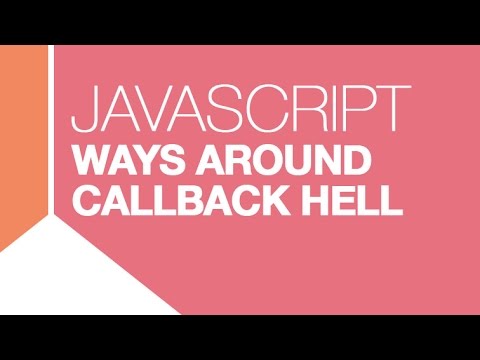Code Talk Notes - Promises and Asynchronous Code

Promises are a pattern for managing async callbacks.
Calling then() generates another promise object, when then resolves at the end of the chain. When promise object resolves, it resolves with the data coming back, which can then be passed to the next promise in the chain. Helps maintain the idea of a return value to asynchronous code - brings return values back.
jQuery
jQuery has promises built in, but not fully up to true A+ promise spec.
When.js
When.js is a much more robust promises library.
When.js library provides many additional helper methods for promises. You can call return when.promise(function(resolve, reject){...}) to return a promise object and pass resolve and reject functions into the promise chain.
Use tap() to add in something asynchronously to the chain.
Use catch() at the bottom of the chain to handle an error at any point in the chain.
Use delay() to add in a delay at any point.
Use timeout() to throw an error if promise isn’t resolved after a certain amount of time.
Use with() to pass in a context (usually this).
When.map() accepts an array of values or promises, and you can pass in an iterator function. It’ll pass each element in the array to the function and return an array of return values. It makes every request as fast as possible, so more efficient than Ruby.
Many When.js functions mirror / have the same names and/or functionality as underscore.js and Ruby::Enumerable methods. This “standard interface” is extremely easy to work with.
You can integrate When.js into Backbone by overriding the Backbone.sync method. Checkout Ironboard repo for an example (backbone-override.js).